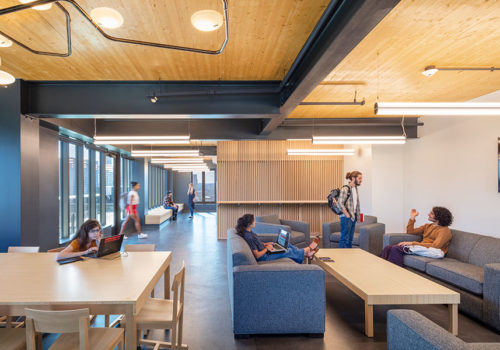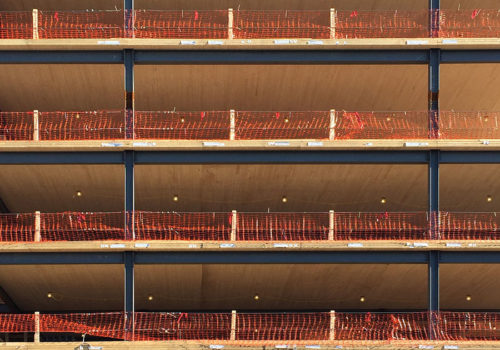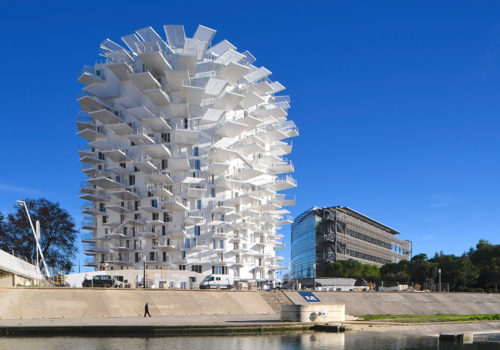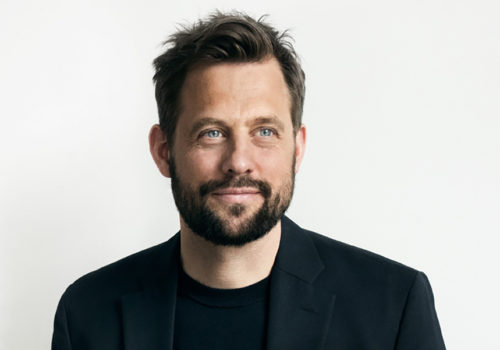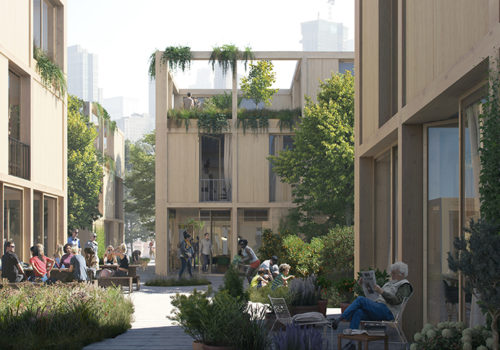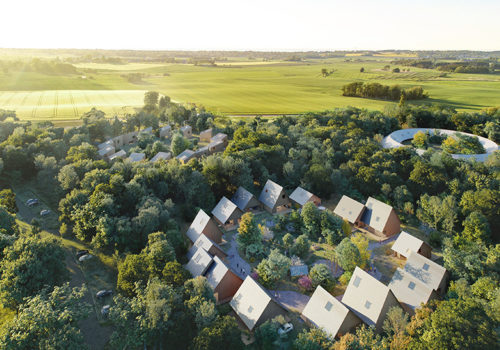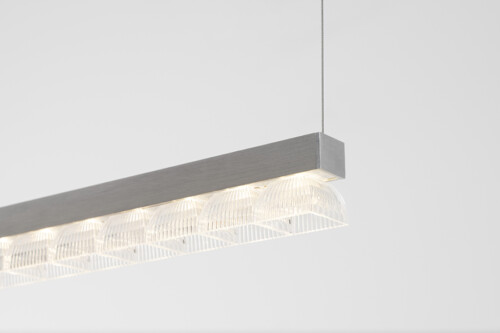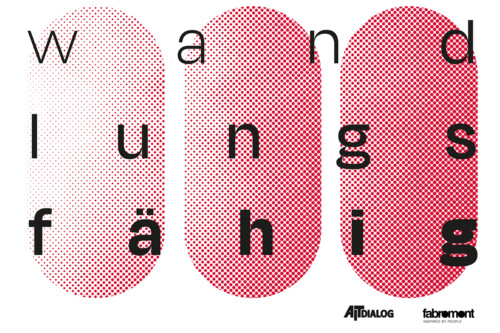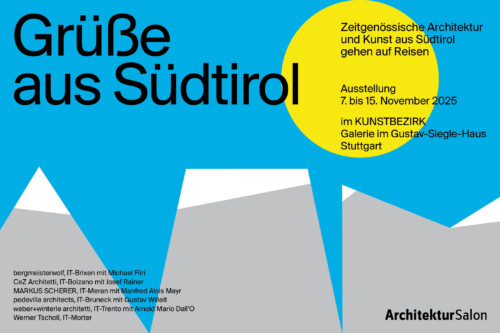beyond.aco | 7 October 2021 – The Keynote Speakers
- Photo: Carmen Maldonado
- Photo: Roland Halbe
- Photo: John Horner
- Photo: NADAAA
Nader Tehrani, NADAAA, Boston, US
The Woodpecker’s Delight
“In a world increasingly challenged by global warming, it is also clear that the construction industry is a major contributor to unsustainable carbon emissions. The identification of naturally renewable resources is a critical factor in determining a sustainable supply chain for the industry, and yet that cannot guarantee the role of architecture in the equation. This lecture will focus on the role of wood, adopted in its hybrid formats to contribute to the cultural and ecological equation in balance.”
Nader Tehrani was born in London, UK, in 1963. He studied at the Rhode Island School of Design, US (Bachelor of Fine Arts, 1985 and Bachelor of Architecture, 1986) and Harvard University, US (Master of Architecture in Urban Design with distinction, 1991).
Together with Rodolphe el-Khoury, he founded the architectural firm Office dA in 1986, from which he retired in 2010. In 2011, together with Katherine Faulkner, he founded NADAAA, a multidisciplinary office dedicated to bridging the gap between different design disciplines: from landscape to urban design, from architecture to interior design, and from industrial design to furniture. NADAAA’s work demonstrates a commitment to new forms of knowledge through design. With an eye toward integrated thinking, they enter into discourse about technology, aesthetics, and building protocols as part of a holistic process.
The firm has received numerous awards for its work, but as recently as 2020, Nader Tehrani himself was awarded the Arnold W. Brunner Memorial Prize by the American Academy of Arts and Letters for his particular achievement in interpreting architecture as art. NADAAA’s best-known buildings include the Melbourne School of Design, AU, the Daniels Faculty of Architecture, Landscape and Design at the University of Toronto, CA, and MIT Site 4, US.
Nader Tehrani is currently the Dean of the Irwin S. Chanin School of Architecture at Cooper Union, US. Previously, he was Professor of Architecture at the MIT School of Architecture and Planning from 2007 to 2015, where he also served as Head of the Department from 2010 to 2014. He has held other (visiting) professorships at the University of Melbourne, AU, the University of Toronto, CA, Harvard University, US, and the Georgia Institute of Technology, US.
- Photo: Cyrille Weiner
- Abre Blanc © SFA+NLA+OXO+DR
- Polytechnique © Oxo + Sou Fujimoto Architects + NLA + RSI
- Revin © Matthieu Tregoat
Manal Rachdi, OXO Architectes, Montreuil, FR
Nature, Architecture and Beyond
“We believe that the most suitable projects for our time are those which are inspired by nature and which respect our environment. Global warming is an incredible opportunity to invent new resilient and innovative ecological architecture.
We believe in livable, inclusive and green cities. We trust in an innovative, social and realistic architecture for a changing world. Our strength comes from strong believing in dreamscapes where the public realm is exciting again, where our buildings contribute in a smart way to the environment problematics. We believe that the best architecture must be a living ecosystem in harmony with the elements forming it, such as structure, technique and services, light and form, its integration to the context and landscape, the well-being that it provides and above all the meaning given to it.”
Manal Rachdi was born in 1978. From 1999 to 2005 he studied architecture and urbanism at the Ecole Nationale Supérieure d’Architecture de Nantes, FR. After graduating, he founded the architecture firm Off architecture in Paris together with Tanguy Vermet in 2006, from which he left in 2010. Already in 2013 he founded his own office in Montreuil, FR with OXO Architectes. Manal Rachdi was able to combine in architecture his childhood dream of living in the forest with his passion for drawing: All his projects integrate large natural areas – terraces, indoor forests, green walls – to (re)introduce a piece of nature into cities.
Manal Rachdi embodies this young generation of architects who dare to disrupt the established order and combine strategic analysis, witty experimentation, social responsibility and humor in their work. His powerful and sensitive architectures propose new urban experiences and reflections on the living space of tomorrow. He uses nature and plants as materials and designs exceptional projects such as the residential tower “Arbre Blanc” in Montpellier with Sou Fujimoto and NLA Paris, FR, Balcon sur Paris, Villiers, FR with Kengo Kuma & Associates, XTU Architects, Stefano Boeri Architetti, Michael Green Architecture and KOZ Architectes or the project Ecotone Antibes, FR with Atelier Jean Nouvel and l’agence Foussat Bapt.
In 2007, Manal Rachdi was an assistant professor at the Versailles School of Architecture.
- Urban Village Project – Shared Courtyard View, © EFFEKT
- Naturbyen, © EFFEKT
- ReGen Villages, © EFFEKT
Sinus Lynge, Effekt, Kopenhagen, DK
Ego to eco
“At EFFEKT we believe that architecture and urbanism are about creating a lasting positive impact on our surroundings and our planet. We therefore measure our projects on their impact – on the EFFEKT. We aim to create a lasting social, economic and environmental effect with everything that we take upon us and we always consider our projects in a local, regional and global context, creating societal value beyond brief and client.”
Sinus Lynge studied at the Royal Danish Academy of Fine Arts School of Architecture in Copenhagen, DK. Together with Tue Foged, he founded the architecture firm EFFEKT in Copenhagen, DK in 2007. EFFEKT is the Danish word for impact. It is a collaborative operating in the fields of architecture, urbanism, and research and currently employ 60 full-time staff.
EFFEKT’s projects focus on social cohesion and vibrant city life, as well as smart solutions for energy consumption and sustainability. In no small part due to Sinus Lynge, the firm takes an empathetic and responsive approach to architecture that combines thorough analysis with playful design thinking. This is exemplified by a number of award-winning projects in architecture, urban design, and research.
For example, the latest successful projects include the concept for the Urban Villages Project – a new visionary model for the development of sustainable, affordable and livable housing in cities around the world. Similarly, the concept for ReGen Villages represents a pioneering model for the development of off-grid, integrated and resilient ecovillages that can independently power and feed families around the world. The project was first presented at the Biennale di Venezia in 2016 and gained wide international recognition.
Under the title EGO TO ECO, EFFEKT is also exhibited in the current Biennale di Venezia. The projects creates a fictional landscape of 1,200 living trees controlled remotely from denmark. The forest surrounds seven of EFFEKT’s projects, which help form a fictional landscape of living trees. „Our installation in venice showcases a series of ideas, concepts, strategies and designs for living and building, for producing, consuming and revitalizing the ecosystems we are part of and depend upon.“
In August 2021, EFFEKT has won a competition to design new headquarters for German publishing house Kieler Nachrichten in Kiel. Named KielHöfe, the 11,000-square-metre mixed-use building, will largely transform existing buildings with new spaces and will be built from timber.
In the fall 2019 semester, Sine Lynge taught a sustainable design course at the University of Washington.








